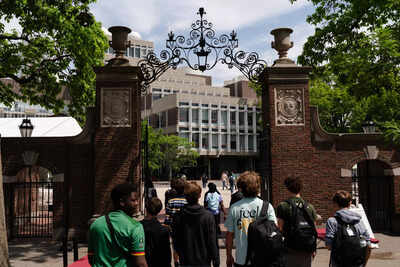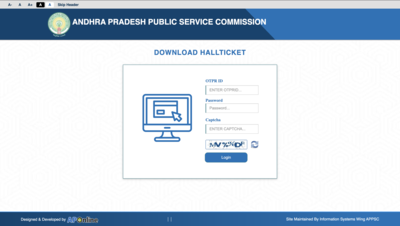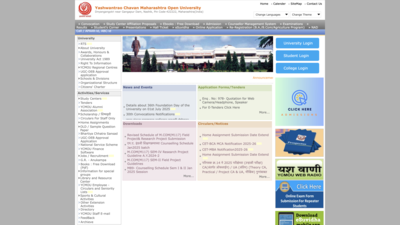Trump’s revenge on the Ivies? As Harvard faces a massive tax hike, its students could bleed financially

Harvard University has long been more than an academic institution. To some, it represents the pinnacle of intellectual achievement. To others, it is a symbol of elitism, a fixture of the liberal establishment. On July 4, President Donald Trump turned that perception into a policy directive, signing a sweeping tax and spending bill that imposes a new financial burden on America’s wealthiest universities.At the center of the legislation is a sharp increase in the endowment tax. Harvard, with an endowment exceeding $50 billion, now faces the prospect of losing hundreds of millions of dollars annually. While the measure appears aimed at institutional wealth, its deeper consequences may be borne by students, particularly those from low-income families who rely on financial aid.
A tax crafted to strike a select few
The new law replaces the relatively modest 1.4 percent excise tax on endowment income, which was enacted in 2017, with a more aggressive tiered structure. Institutions with the highest per-student endowments will now face rates of up to 8 percent. Harvard qualifies for the steepest bracket, as do a handful of other elite schools, including Yale, Princeton, and MIT.Supporters of the bill argue that such institutions can afford to contribute more. However, the scope of the tax is limited. It spares smaller colleges and exempts many religious and conservative-leaning institutions. The selectivity of the measure has raised questions about whether it is truly about equity or whether it is a politically charged act of retribution against perceived ideological adversaries.Yale University has already estimated that the tax will cost it at least 280 million dollars annually. Its president warned of difficult decisions ahead, hinting at reductions in spending that could impact students directly. Harvard has not released its own projections but is expected to face a similar financial strain.
Endowments: Complex mechanisms, not idle fortunes
To the general public, a university endowment may appear as a massive pool of untouched wealth. In reality, endowments are composed of thousands of individual funds, most of which are legally restricted for specific uses. These include scholarships, faculty salaries, research initiatives, and community engagement programmes.According to the National Association of College and University Business Officers, nearly half of all endowment spending in 2024 supported student financial aid. At Harvard, this proportion is even more pronounced. The university uses its endowment to ensure that students from low-income backgrounds pay little or no tuition. That model of accessibility is now at risk.If investment returns shrink due to taxation, it is likely that discretionary spending will tighten. Financial aid could be scaled back. Research initiatives could be postponed. Hiring freezes may follow. While the university will continue to function, its capacity to serve as an engine of opportunity and innovation could be significantly diminished.
Ideological underpinnings in economic clothing
The stated goal of the new tax is to redirect billions of dollars from wealthy universities to federal priorities. Education Secretary Linda McMahon noted that taxing endowment income could be a reasonable way to generate revenue. But the selectivity of the tax and the political language surrounding its passage suggest other motives at play.The legislation was shaped by a Republican House committee and softened by the Senate to avoid backlash from conservative constituencies. Dozens of schools were exempted based on student population size and mission type. In effect, the tax disproportionately impacts liberal-leaning institutions with global reach, while sparing colleges aligned with more traditional or religious values.This imbalance lends weight to the criticism that the tax is less about economic justice and more about ideological balancing. It raises the uncomfortable question of whether policy is being used to discipline institutions that challenge political authority or social norms.
Students at the heart of the fallout
The most troubling aspect of the new tax regime is that it endangers the very people these universities have worked hardest to support. For the past two decades, Harvard and its peers have expanded access to historically underrepresented groups through generous aid packages. These programmes are funded not by tuition but by the performance of endowment assets.If those assets are eroded by taxation, it will be students from modest backgrounds who suffer. They may receive smaller grants. They may face increased debt. They may lose out on academic enrichment programmes that were once within reach.The impact is not confined to elite universities alone. These institutions are often leaders in research, policy innovation, and social mobility. Weakening their capacity to fund ambitious projects and accessible education will ripple across sectors far beyond higher education.
The true cost of taxing the Ivies
The public may take satisfaction in seeing elite institutions made to pay more. Harvard’s size and influence make it an easy political target. Yet the symbolism comes at a cost. Taxing educational endowments like corporate profits reframes universities as revenue centers rather than public-serving institutions. It sets a precedent that could alter the fundamental understanding of higher education’s role in society.This policy raises a stark and pressing question: Who really pays when Harvard is taxed? If the answer turns out to be students on financial aid, then the nation risks undermining not only its most prestigious institutions but the very principles of access and advancement that those institutions have come to represent.In the end, the loss may not be measured in dollars alone. It may be measured in dreams deferred.





